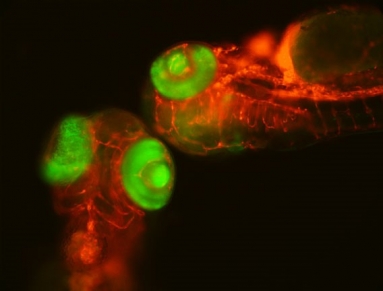 David Traver, Ph.D., a professor of Cellular and Molecular Medicine at the University of California, San Diego, is the recipient of an LLS Career Development Program (CDP) grant. Traver’s research laboratory is using the zebrafish as a model to study the biology of cancer.
David Traver, Ph.D., a professor of Cellular and Molecular Medicine at the University of California, San Diego, is the recipient of an LLS Career Development Program (CDP) grant. Traver’s research laboratory is using the zebrafish as a model to study the biology of cancer.
Most of his team’s studies are aimed at understanding how the hematolymphoid system arises in the zebrafish embryo from the first hematopoietic stem cells. The zebrafish system offers easy visualization of blood cells in the translucent embryo and the ability to dissect pathways genetically.
In the simplest of terms, how would you summarize what you are hoping to do?
Our main question is how hematopoietic stem cells (HSCs) are born in the vertebrate embryo. There are several waves of blood cell formation during the development of all vertebrate animals, but only HSCs are conferred with the ability to self-renew for life. We are working to understand the genetic basis of how this self-renewal program is formed, since self-renewal is the key to stem cell function over time and also what is inappropriately conferred to cancer-initiating cells. If we can understand how normal self-renewal programs operate, we believe we can understand how these programs are co-opted by the leukemogenic process to give rise to leukemias.
What is the biggest challenge your team faces?
Our biggest challenge is to keep our research programs funded. The funding climate in the U.S. is still incredibly challenging, especially for ideas that are unconventional or ambitious. The 5-year award from LLS has been a great help in providing stability to my group.